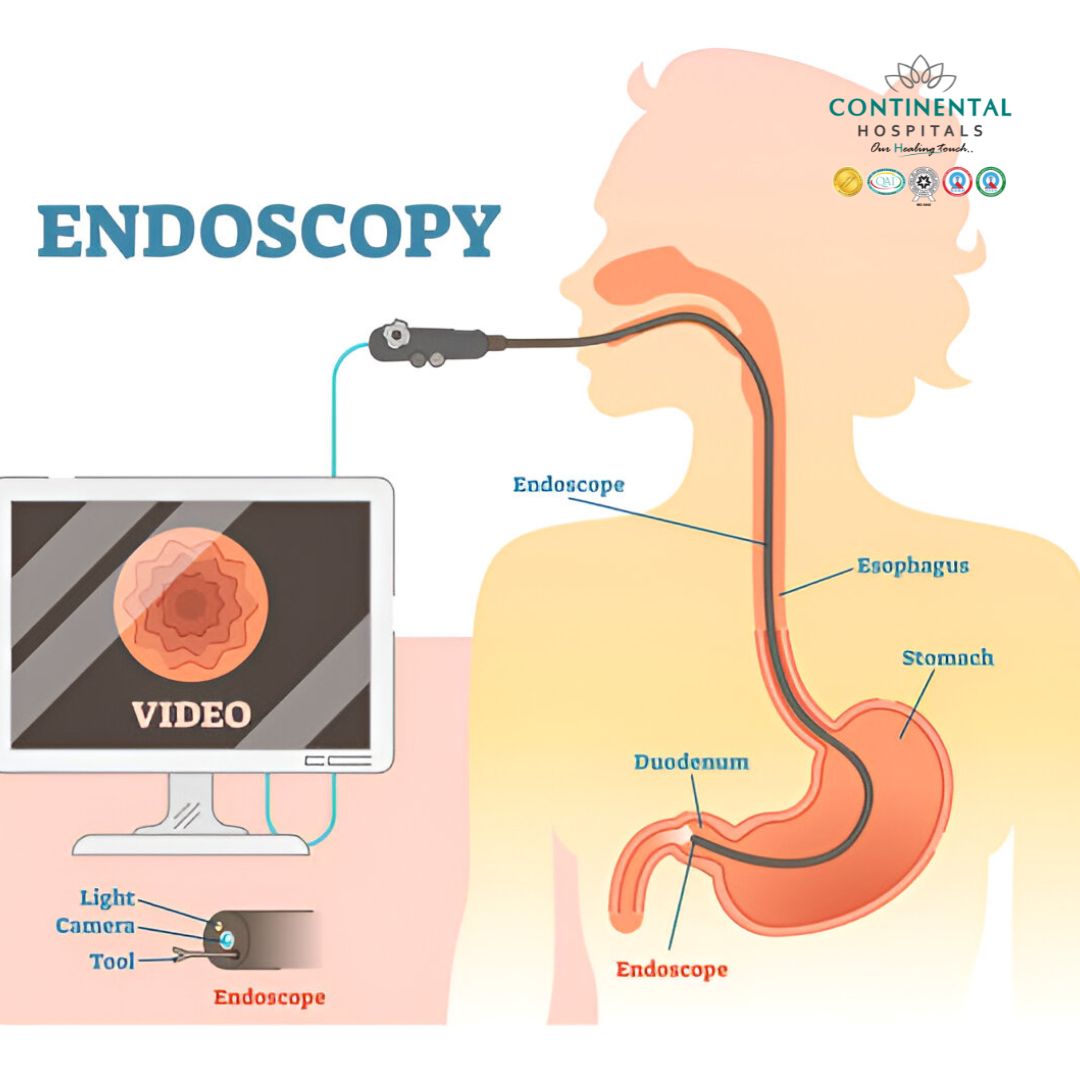Upper Endoscopy, also known as Esophagogastroduodenoscopy (EGD), is a procedure where a thin, flexible tube with a high-definition camera—called an endoscope—is passed gently through your mouth, down your throat, and into your upper digestive tract. This allows direct visualization of the lining of your:
Esophagus: The tube that carries food from your throat to your stomach
Stomach: Where digestion begins
Duodenum: The first section of your small intestine
With EGD, our specialists can identify abnormalities such as inflammation, ulcers, tumors, bleeding, or structural problems like strictures. We can also perform biopsies (tissue sampling), remove polyps, or treat certain conditions during the procedure.

Upper Endoscopy is a powerful tool for diagnosing:
Gastroesophageal Reflux Disease (GERD) and Barrett’s Esophagus
Peptic Ulcers
Celiac Disease
Esophageal Varices
Upper GI Bleeding
Tumors and Cancer
Inflammation and Infections
Swallowing Disorders
Early detection through EGD enables prompt treatment and can prevent serious complications. It also helps clarify the cause of troubling symptoms such as persistent heartburn, difficulty swallowing, unexplained abdominal pain, or gastrointestinal bleeding.
Our team of board-certified gastroenterologists is specially trained in diagnosing and managing digestive and liver disorders. They bring years of clinical expertise and the latest medical knowledge to every patient consultation and procedure.
DLDC uses cutting-edge, high-definition endoscopy systems that provide crystal-clear images of your digestive tract. This advanced technology improves diagnostic accuracy and allows for minimally invasive therapeutic procedures during your endoscopy.
We understand that undergoing an endoscopic procedure can be stressful. That’s why we prioritize your comfort with:
Individualized sedation options — from mild sedation to deeper anesthesia.
Continuous monitoring by skilled medical staff.
A calming and supportive environment designed to ease anxiety.
At DLDC, your experience matters. We guide you through every step:
Thorough pre-procedure consultation explaining what to expect.
Clear preparation instructions to optimize procedure success.
Detailed post-procedure care and follow-up discussions.
Open communication for questions or concerns.
Your gastroenterologist at DLDC may recommend an upper endoscopy if you experience:
Persistent or severe heartburn or acid reflux
Difficulty swallowing or sensation of food getting stuck
Unexplained nausea, vomiting, or weight loss
Symptoms of gastrointestinal bleeding (such as vomiting blood or black stools)
Suspected ulcers, tumors, or infections
Monitoring of known upper GI conditions like Barrett’s esophagus or celiac disease
Routine screening may also be advised for patients with risk factors such as a family history of upper GI cancers or chronic gastroesophageal reflux disease.
Proper preparation is essential for a successful and safe procedure. Our team will provide clear instructions tailored to your specific needs, including:
Fasting Guidelines: Typically, you should not eat or drink for 6-8 hours before your procedure to ensure your stomach is empty.
Medication Management: We will advise you on which medications to continue or temporarily stop, particularly blood thinners or diabetes medications.
Day of Procedure: Arrange for a responsible adult to accompany you and drive you home, as sedation may impair your ability to drive.
Questions & Support: Our staff is available to address any preparation concerns and ensure you feel confident before the procedure.
Arrival and Check-In: Our friendly team welcomes you and reviews your medical history and preparation status.
Sedation Administration: You receive sedation or anesthesia tailored to your comfort level.
The Procedure: The gastroenterologist gently inserts the endoscope through your mouth, advancing it to visualize your esophagus, stomach, and duodenum.
Examination and Treatment: The doctor inspects the lining, takes biopsies if needed, and may perform interventions such as polyp removal or dilation of narrowed areas.
Monitoring and Recovery: After the procedure (usually 15-30 minutes), you are monitored as sedation wears off in a comfortable recovery area.
Most patients recover quickly and can resume normal activities the next day. Mild sore throat, bloating, or mild cramping are common but temporary.
Important: Contact DLDC immediately if you experience severe abdominal pain, fever, persistent vomiting, difficulty breathing, or heavy bleeding.
Your physician will discuss results with you and recommend further care, lifestyle changes, or treatments if necessary.
Accurate Diagnosis: Direct visualization and biopsy allow precise detection of diseases.
Early Detection: Identify cancer or precancerous changes early when treatment is most effective.
Therapeutic Interventions: Treat certain problems during the procedure, reducing the need for surgery.
Minimally Invasive & Safe: Less discomfort and quicker recovery compared to traditional surgery.
Patient-Centered Approach: Personalized care tailored to your unique health needs and concerns.
If you or a loved one is experiencing digestive symptoms or needs screening, trust DLDC’s expert gastroenterologists for your upper endoscopy. We offer flexible scheduling, accept most insurance plans, and prioritize your comfort and health.
No, sedation options are provided to ensure you remain comfortable and pain-free during the procedure.
You will need to fast for at least 6 to 8 hours before your procedure and follow any medication instructions provided by DLDC.
Upper endoscopy can detect ulcers, inflammation, tumors, Barrett’s esophagus, infections, and other upper digestive tract diseases.
The procedure typically takes between 15 to 30 minutes.
Your DLDC physician will review your results with you shortly after the procedure and discuss any next steps.
Upper endoscopy is generally safe, with minimal risks such as bleeding or perforation, which are very rare. Our team takes all precautions to ensure your safety.